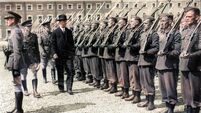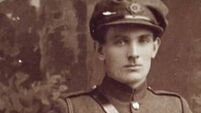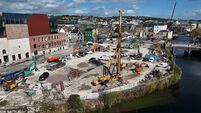Clodagh Finn: The woman who took the last known photo of Michael Collins
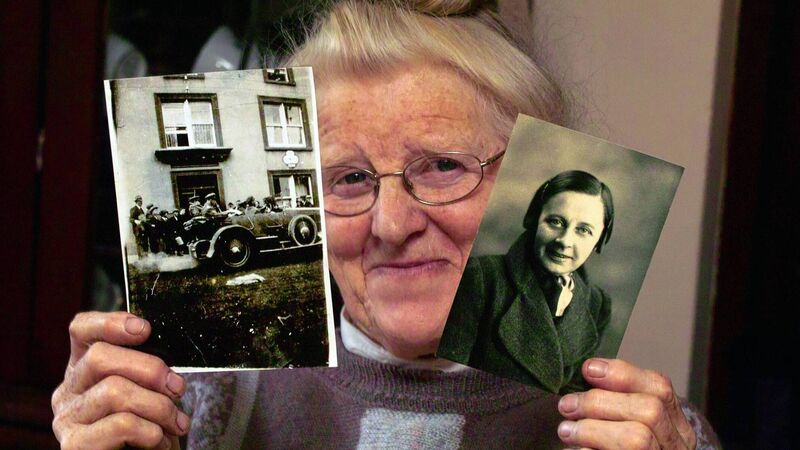
Mim O'Donovan holding a photo and a portrait of her late aunt and photographer Agnes Hurley, the photographer who took photographs at Beal Na Blath the day after the death of Michael Collins and who reportedly was in possession of his blood-stained shirt collar. Picture: Denis Boyle
When Agnes Hurley fixed the viewfinder of her Brownie box camera on Michael Collins as he left Bandon, Co Cork, on August 22, 1922, she had no idea that he would be dead a few hours later.
The 18-year-old from nearby Mallowgaton already had a photographer’s instinct and brought her camera with her everywhere. “She carried it around with her like a person would a mobile phone today,” her niece Mim O’Donovan said.
It was quite the coup to be positioned in front of Lee’s Hotel (now the Munster Arms Hotel) with a clear view of Michael Collins as he left the West Cork town, sitting next to his aide Emmet Dalton in the back of a luxury Leyland touring car.
The car is the focus of her atmospheric shot – complete with exhaust fumes – but you can also sense the ripple of excitement in the crush of people gathered along the pavement and one, looking down on proceedings from the vantage point of an upstairs window.
Even without knowing what would later happen a few miles down the road, the young amateur photographer had succeeded in capturing an important moment in time.
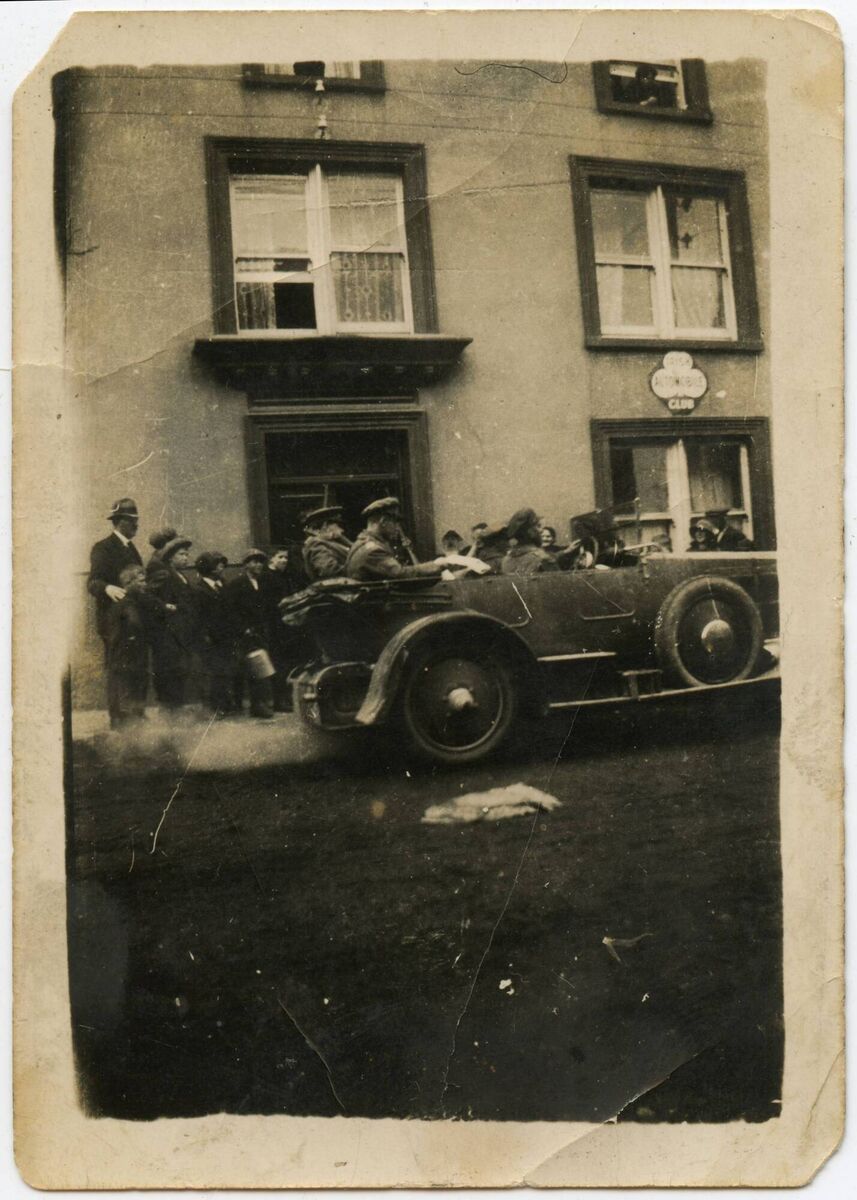
Just how important became clear soon afterwards when Michael Collins was fatally wounded in an ambush at Béal na Bláth that evening. Agnes Hurley’s moment of serendipity had been transformed into something exceptional; her image remains the last known photograph of the revolutionary leader alive.
That fact is noted on the photograph itself. Someone, though probably not Agnes, wrote on the back: “Last snap of M. Collins taken on Tuesday, 22nd Aug 1922 a few hours before ambush.” It’s written in pencil and then traced over in pen sometime later, as if to ensure the message was preserved for posterity.
But Agnes Hurley’s brush with history did not end there. The following day, as she and her younger siblings Julia and Maurice were taking grain to Howard’s Mill in Crookstown, they passed the site of the ambush. She took another photograph which has this note on the back: “Scene of death of Michael Collins taken day following ambush; 23rd Aug 1922.”
Agnes’s niece Mim O’Donovan takes up the story: “She had her camera and took a photo of the side of the road.
They walked along the higher parallel road, where the anti-Treaty IRA had taken up their positions, and saw what they described as nine indentations; places where men had been leaning against the fence and ditch. They saw empty casings too and gathered up a few which they took home along with what they believed was Michael Collins’s collar.
Police forensics were still a way off, but Agnes and her siblings saw the importance of what they had discovered although, unlike the photographs, those artefacts were later thrown out. But that’s a story for later.
In 1922, Agnes was a teenager with a deep interest in photography. She got her Brownie box camera the year before and had started to hone her skills taking family portraits at her parents’ farm in Mallowgaton.
While it was relatively unusual for such a young woman in rural Ireland to be so interested in photography, the Brownie camera, introduced by Kodak in 1900, had turned ordinary people into photographers for the first time.
It was cheap and easy to use. All you had to do was point and shoot. As the advertising jingle went: “You press the button, we do the rest.”
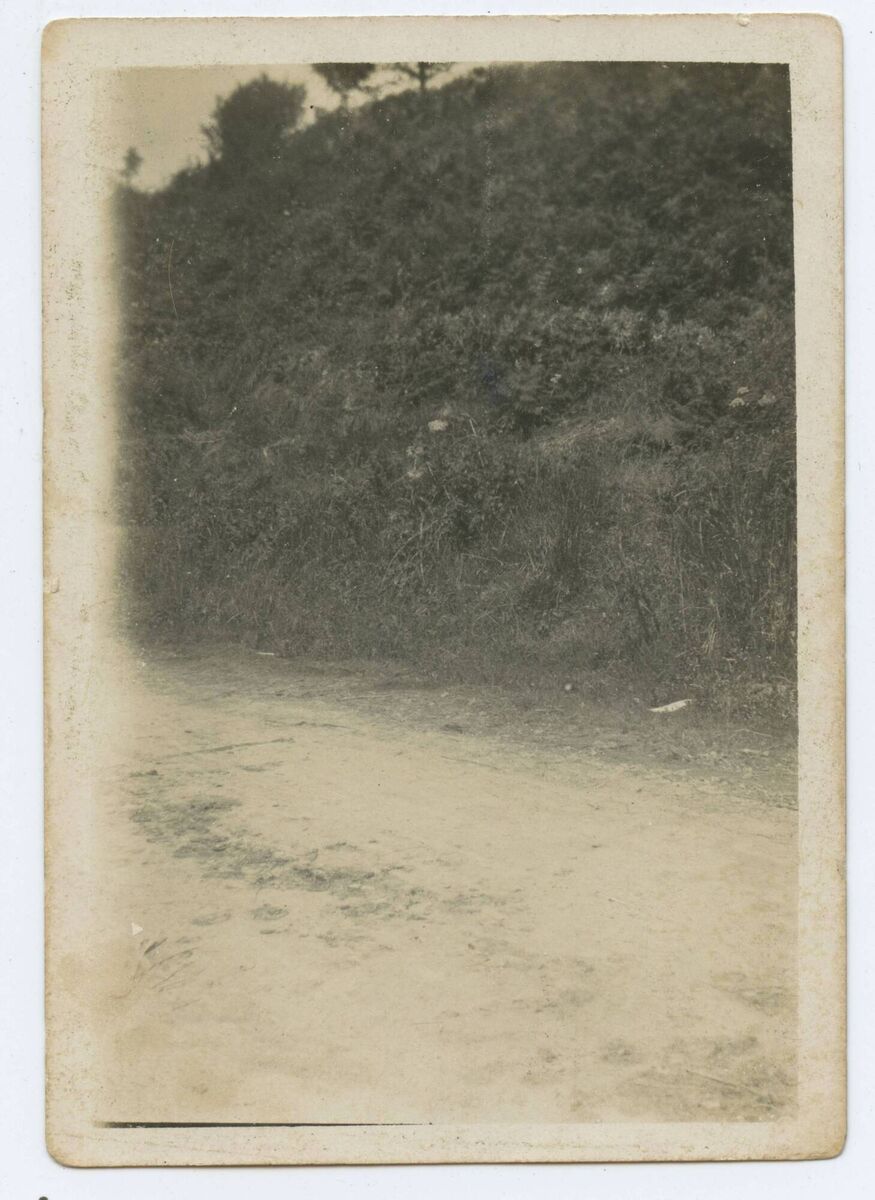
The Brownie was also seen as a fashion accessory, in the States at least, and it allowed women to chart their lives in a way that had not been possible before.
We don’t know if Agnes Hurley saw her box camera as fashionable or not, but she certainly wore it like a favourite accessory. Between 1921 and the early 1940s, she took hundreds of photographs, most of them beautifully composed photos of her family with their dogs or horses.
She left her collection to her niece, Mim O’Donovan of Crookstown, who brought the Michael Collins and Beál na Bláth photos to the UCC Revolutionary Decade Roadshow in Clonakilty in 2012. A few years later, she donated them along with a number of personal photos to the Cork City and County Archive.
Archivist Felix Meehan described the photos as precious artefacts which offer us an exceptional connection to the past.
“Holding a letter that someone has cried over transports you back to a time long gone,” he tells Irishwoman’s Diary. “A photograph, however, is even more vivid; capturing a moment that turned out to have such deep resonance in Irish history.
"It is all the more poignant given that the person behind the lens was a young local woman who joined the crowd in Bandon that day.”
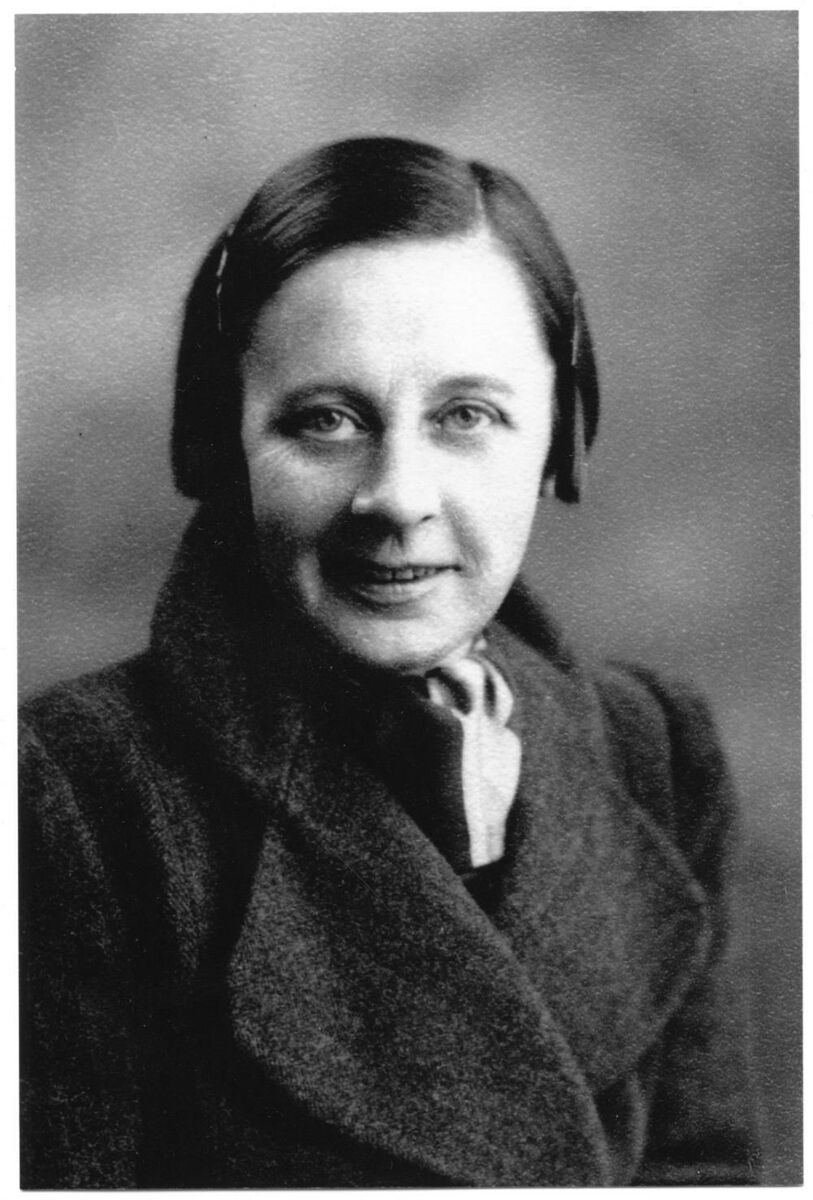
Mim O’Donovan adds another layer to the memory of a day that would prove so pivotal in Irish history. Agnes Hurley’s family were stooking barley – stacking the sheaves to allow them to dry – when Michael Collins’s convoy passed by on its way to Béal na Bláth.
They saw the motorcyclist, the Crossley Tender, the Leyland car and the armoured vehicle. They didn’t realise then that it had anything to do with Michael Collins, just as they were unaware of the significance of the shots they heard ringing out in the August evening a short while later.
Agnes Hurley later moved to England and worked as a teacher. She also worked in the Ministry of Pensions before returning to Ireland in the mid-1940s.
She didn’t say much about her historic photos of Michael Collins, but she did tell her niece what happened to the collar she believed to be his.
Over to Mim: “A few years after 1922, she was studying in Cork and her mother didn’t think she was doing enough study – she was following [Irish republican activist and politician] Mary MacSwiney around.
"Her mother didn’t mind the War of Independence, but she hated the Civil War.”
Mim knew Agnes well, having spent some time living with her on the family farm in Mallowgaton when she was a child. Her own mother, Julia, had four children under three so Mim moved in with her Aunt Agnes and her grandmother, Mary Good, for a time.
“Agnes was definitely a character,” Mim, a former public health nurse, recalls. “She was easy to live with as long as you did what you were told.” Though Mim didn’t always do that.
One time, as a small girl, she admits to biting her brother Jer. When Jer told Agnes, she wouldn’t believe him without seeing the evidence.
“When she found bite marks on Jer’s arms, she turned to me and bit me – through the clothes – in the exact same spot. That was the last time I ever bit anyone.”
In later years, Mim remembers Agnes as a woman who read voraciously and kept meticulous diaries. “She could tell you exactly what the weather was like two weeks ago.” Those diaries don’t survive, but happily her photographs do.
She died on November 1, 1982. All Saints’ Day. “I remember a neighbour saying: ‘Didn’t she die on a grand day?’”






